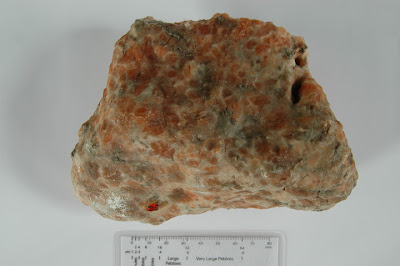Minerals of the Avon
region
Gypsum (CaSO4 – 2H2O)
Colour:
White but may also be
clear, or stained pink or orange depending on the percentage of included
iron minerals.
One polymorph – Desert Rose – may be brown
because of included sand.
Polymorphs:
Selenite
( Serenity )
Satin
Spar
Desert
Rose
Alabaster
(Saccharoidal )
Crystal system:
May be tabular, prismatic,
acicular, fibrous, granular or massive.
Specific gravity:
2.31 – 2.33
Hardness:
1.5 – 2 on the Moh scale
Group:
Gypsum is a sulphate group
evaporite mineral
Location:
Aust Cliff*.
Please follow the Geologist's Code
here.
Gypsum - Satin Spar
BRSUG B2317
Gypsum - Selenite
BRSUG B6236
Gypsum - Desert Rose
BRSUG B3472
Gypsum - Alabaster
BRSUG B3932
The four pictures
above are from the Geology Collection, University of Bristol. Larger pictures are here.
Paragenesis
There are very large
deposits in the UK, the biggest is in East Sussex, with several seams in the Jurassic Purbeck beds. There are others in Staffordshire,
Cumbria and Yorkshire. Gypsum is soluble in water but is unusual in that it becomes
less soluble as the temperature rises. The deposits formed as seas or saline
lakes dried out. It normally occurs as a massive rock or as crystals but can
also form on the surface, as sand, where it is exposed to strong winds, such as
the White Sands Monument in New Mexico.
General
The Fauld gypsum mine in Staffordshire
was the location of the biggest conventional explosion in either of the two
world wars. in 1944, 3,500 tonnes of explosive blew up , killing 77 people and forming
a crater 300ft deep.
Because of its solubility in water and the fact that there are many shallow gypsum seams under Ripon, the city is known for an average of one subsidence event per year where solution cavities in the gypsum migrate to the surface and cause holes to open up. Details here.
Local exposures
The best known local exposure of gypsum
is at Aust Cliff*. The mineral occurs as both irregular masses and geodic
nodules in the Mercia Mudstone. Here, in its alabaster massive
form, it has the sugar lump or saccharoidal appearance, white or pink in
colour.
It also occurs in secondary
concentrations at the contact between the mudstones and underlying beds, as the ‘Satin Spar’ fibrous form which is invariably pure white.
Uses
Gypsum
( Alabaster ) was used in Somerset for ecclesiastical carvings but its main use
now is for the production of dry lining boards for the building industry.
It
is also used as a soil conditioner for heavy, poorly draining, soils where the
included sulfur (c. 15%) also aids plant growth by reducing the alkalinity.
It
is a small constituent of Portland cement where the proportion controls the set
time. The gypsum for this use in the UK invariably comes from the Sussex mine.
It is said, by the Sussex miners, that every house built in the UK since about
1900 contains some gypsum from their mine.
It
also, of course, has a medical use as ‘plaster of Paris.’
A side effect from the work to
reduce the quantity of sulfur dioxide emitted from power stations is that a great deal
of gypsum is produced by the desulfurisation process and so reduces the
quantity required to be mined. This has, conversely, resulted in an increase in
demand for calcium carbonate in the form of Limestone. The chemical reaction is
CaSO3 (solid) + H2O (liquid) + ½O2 (gas) → CaSO4 (solid) + H2O.
Further details here.
Richard Kefford
*Aust Cliff is a SSSI and removal of
specimens from the cliff face is both hazardous and illegal.
References:
Geology Collection, University of Bristol.





No comments:
Post a Comment